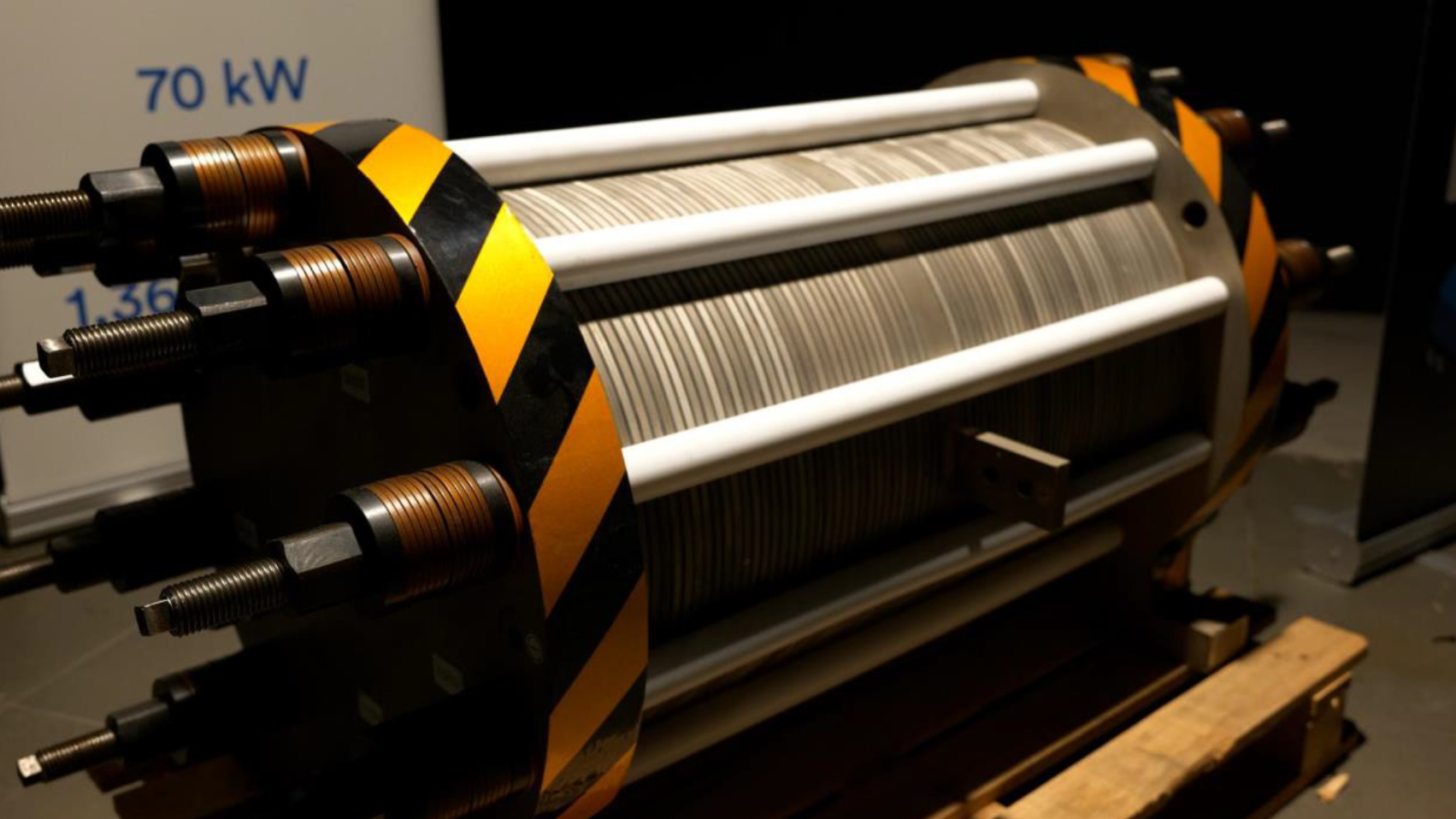Led by researchers from Saxion University of Applied Sciences, companies (including Demcon), partners and students have jointly designed an innovative electrolysis system. This system for decentralized hydrogen production uses wind and solar energy to produce hydrogen locally. The hydrogen is subsequently stored and converted to energy when needed. This innovative design, stemming from the HYGENESYS research project, helps combat grid congestion and provides a more stable sustainable energy supply.
The Netherlands wants to be CO2 neutral by 2050. This requires large-scale use of solar and wind energy. But solar and wind energy depend on time of day, weather conditions and seasons. To ensure that sufficient energy is always available, it is important to store that energy temporarily and on a large scale.
Storing energy in hydrogen
When there is a surplus of renewable energy, it can be used to generate hydrogen. Because the surplus energy is then stored in hydrogen, this reduces the stress on the power grid. The stored energy in hydrogen can then be converted back to electricity in windless and cloudy weather. Because hydrogen can be well transported via (partly existing) pipelines, large amounts of energy can be moved without causing additional stress on the power grid.
From central to decentralized
“Now green hydrogen is still mainly produced at large, central locations in the country,” says Benno Aalderink, associate lecturer in Hydrogen Technology and Applications at Saxion University of Applied Sciences. “But to achieve the climate goals, it is also necessary to produce green hydrogen locally (decentralized). This is possible with small-scale electrolysis systems, as designed in project HYGENESYS. These electrolysis systems convert water into hydrogen and oxygen. The hydrogen can then be converted back to electricity when needed. This creates a more stable sustainable energy supply and relieves the overloaded power grid. In this way, decentralized hydrogen production can play a crucial role in the energy transition. Using the oxygen locally created in the process can also be interesting in the future.”
From theory to practice
Not much focus has yet been placed on the development of decentralized electrolysis systems and the local generation of hydrogen. With project HYGENESYS, together with various partners, important expertise has been developed and, through the involvement of students, a contribution has been made to training future employees in this field. By bringing together different partners and disciplines, a future-oriented approach has been created. The ultimate goal is to realize a hydrogen production system at the H2Hub in Twente and to conduct research into decentralized industrial applications of hydrogen. In time, the residential application of decentralized hydrogen will also be tested.
Innovation thanks to cooperation with diverse parties
HYGENESYS is a RAAK MKB project and part of the strategic cooperation between Saxion University of Applied Sciences and the HAN in the field of decentralized hydrogen. For the HYGENESYS research project, diverse parties are working together: Boessenkool, Cogas, Demcon, H2Hub Twente, Hogeschool van Arnhem en Nijmegen, HyMatters, Jotem, Kiemt, Kiwa, Powerspex, ROC van Twente, Hogeschool Saxion, University of Twente, VDL Energy Systems and Waterschap Vechtstromen. Students, researchers, companies and partners are together investigating the possibilities for hydrogen production via decentralized electrolysis systems. They are doing this under the leadership of the Sustainable Energy Systems lectorate of Saxion University of Applied Sciences. The project was carried out at the H2Hub Twente in Almelo.
Read the press release by saxion here (NL): HYGENESYS: energie in waterstof, waar en wanneer je maar wil | Hogeschool Saxion

